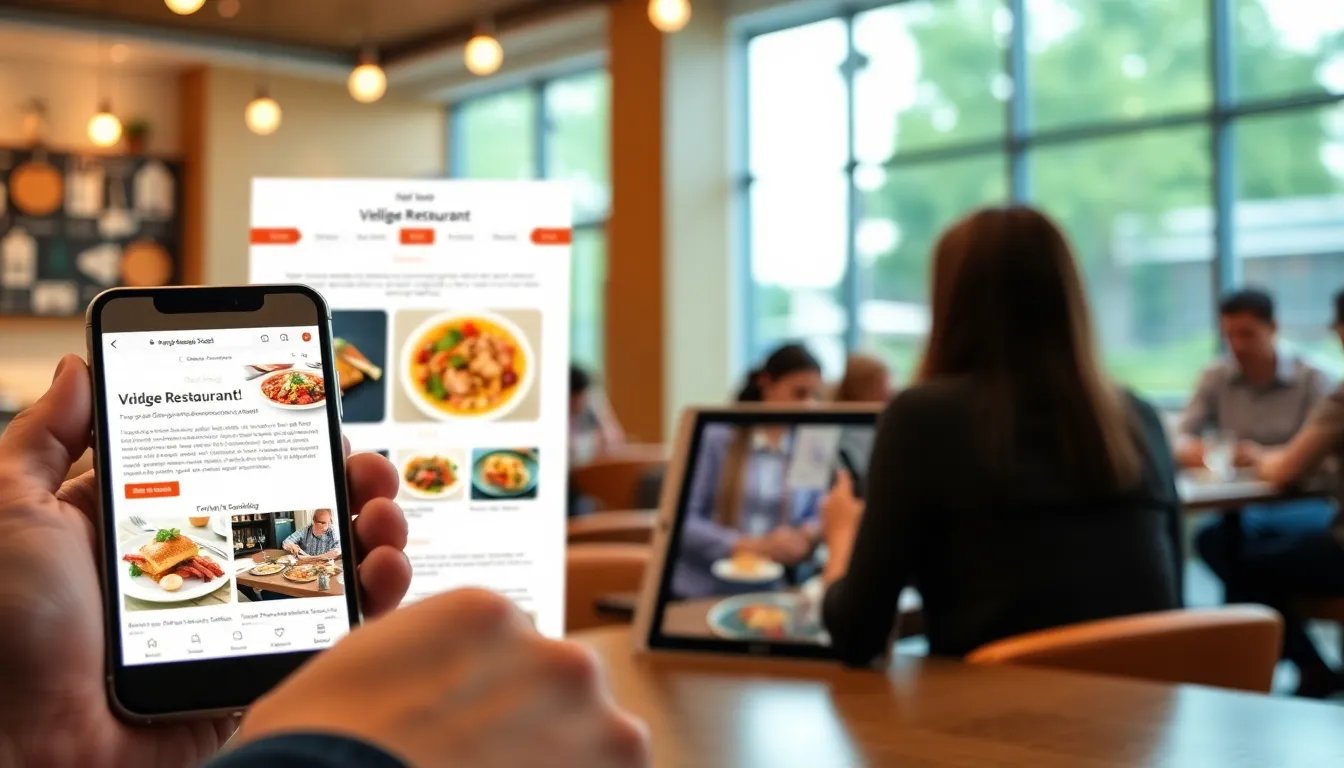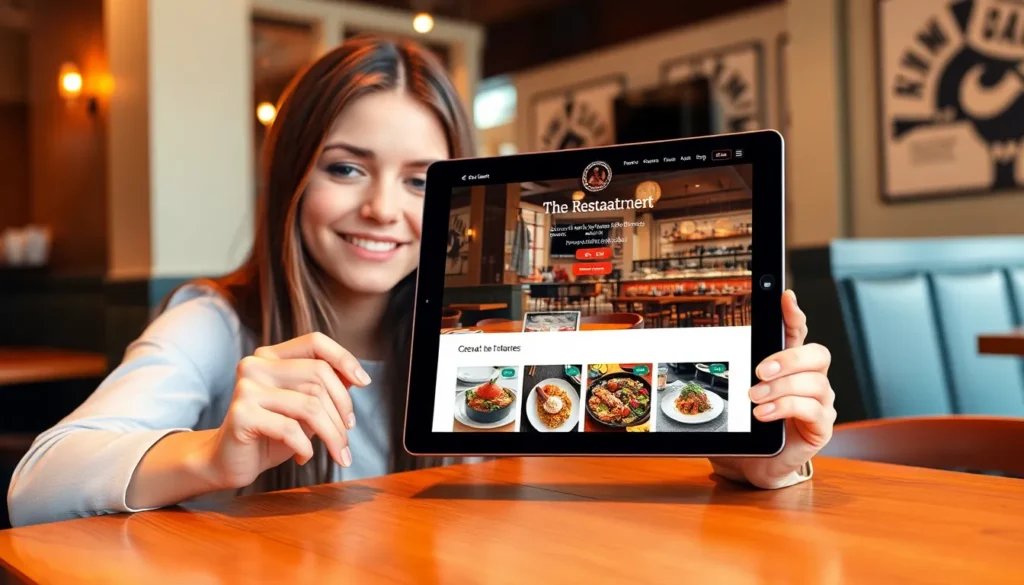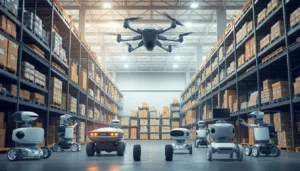In today’s digital age, a restaurant’s website is like its front door—if it’s uninviting or outdated, customers might just walk right past. A well-designed website not only showcases a restaurant’s unique charm but also serves up essential information like menus, hours, and reservations with a side of flair. It’s the first impression that can turn curious diners into loyal patrons.
Table of Contents
ToggleImportance Of Restaurant Website Design
A restaurant’s website serves as a critical tool in shaping its online identity. Effective website design not only conveys essential information but also enhances customer engagement.
Enhancing Customer Experience
User-friendly navigation contributes significantly to a positive customer experience. Easier access to menus, hours, and reservation options leads to higher satisfaction. Engaging visuals and compelling content create an inviting atmosphere, drawing potential customers in. Responsiveness on various devices ensures that information is accessible, regardless of how it’s viewed. Streamlined booking systems streamline the reservation process, making it effortless for guests.
Boosting Online Presence
A well-optimized website improves a restaurant’s visibility in search results. Search engine optimization techniques can attract more organic traffic. Social media integration encourages customers to share experiences, enhancing online presence. Consistent branding across the website reinforces recognition, leading to stronger customer loyalty. Engaging blogs or articles pertaining to food trends can establish authority in the culinary niche, attracting a broader audience. Investing in a quality website fosters a positive online reputation that resonates with prospective diners.
Key Elements Of Restaurant Website Design

A restaurant’s website requires specific elements for optimal user engagement and effectiveness. Key components significantly enhance the customer experience.
User-Friendly Navigation
User-friendly navigation remains essential for guiding visitors. Simple menus and clear labels enable easy access to vital information. Patrons quickly locate menus, hours, and reservation links, reducing frustration. Intuitive pathways encourage exploration, increasing the chances of securing a reservation. Organizing content into logical categories fosters efficiency, keeping potential customers engaged. Well-structured navigation minimizes clicks to vital information, enhancing user satisfaction.
Responsive Layout
Responsive layout guarantees that a restaurant’s website appears seamlessly across devices. Mobile users often seek information on-the-go, so adaptability keeps the site functional on smartphones and tablets. Adjusting design elements to various screen sizes prevents usability issues and boosts engagement. Visitors appreciate consistent experiences, whether browsing from a desktop or a handheld device. Optimizing images and content ensures fast loading times, crucial for retaining interest. Overall, a responsive layout enhances accessibility, leading to increased customer retention.
Best Practices For Effective Design
Effective design plays a crucial role in enhancing user experience on a restaurant website. Emphasizing visual appeal and functionality helps create a lasting impression on potential diners.
High-Quality Imagery
High-quality imagery captures the essence of the restaurant’s atmosphere and food. Images showcasing dishes entice visitors and stimulate appetite, showcasing culinary talent. Using professional photography instead of stock images creates authenticity, establishing a deeper connection with diners. Consider including interactive elements such as image carousels to engage users further. These features encourage exploration, making the website visually dynamic. Imagery should be optimized for fast loading to ensure seamless user experiences across devices.
Clear Call-To-Actions
Clear call-to-actions guide users towards desired actions on the website. Phrases like “Reserve a Table” or “Order Online” should stand out and prompt immediate responses. Strategically placed buttons increase visibility and help users navigate effortlessly. Color contrast between call-to-action elements and the background enhances discoverability. Each call-to-action should link directly to relevant pages, streamlining the user journey. Frequent reminders and straightforward wording encourage interaction, ultimately improving conversion rates and fostering engagement.
Common Mistakes To Avoid
Avoiding common pitfalls in restaurant website design ensures a more engaging experience for users. Proper attention to layout, loading times, and usability can significantly impact a restaurant’s online presence.
Cluttered Layout
Clutter in a website layout overwhelms visitors. Too many elements on a page can obscure essential information, leading to frustration. A balanced layout, with ample white space, promotes clarity and ease of navigation. Prioritizing simplicity in design does not eliminate creativity; it enhances usability. Organized content areas guide users smoothly through the site, improving their overall experience. Using a clear hierarchy in text and visuals aids in directing attention to crucial sections, such as the menu and reservations.
Slow Loading Times
Slow loading times diminish user satisfaction. Visitors expect quick access to information, and any delay can result in lost engagement. Studies show that 40% of users abandon a website that takes more than three seconds to load. Optimizing images and minimizing unnecessary scripts effectively reduces loading times. Ensuring website optimization for various devices also contributes to a faster user experience. A responsive website not only retains visitors but also fosters higher conversion rates, making quick loading times a priority in design strategies.
A restaurant’s website serves as its digital front door and plays a pivotal role in attracting and retaining customers. By focusing on user-friendly navigation engaging visuals and responsive design restaurants can create an inviting online presence that resonates with potential diners. Investing in high-quality imagery and clear call-to-actions enhances user experience and encourages interactions.
Avoiding common pitfalls like cluttered layouts and slow loading times ensures that visitors remain engaged and satisfied. A well-designed website not only reflects the restaurant’s unique character but also establishes authority and fosters a positive online reputation. Embracing these design principles can lead to increased visibility and loyalty in a competitive culinary landscape.










